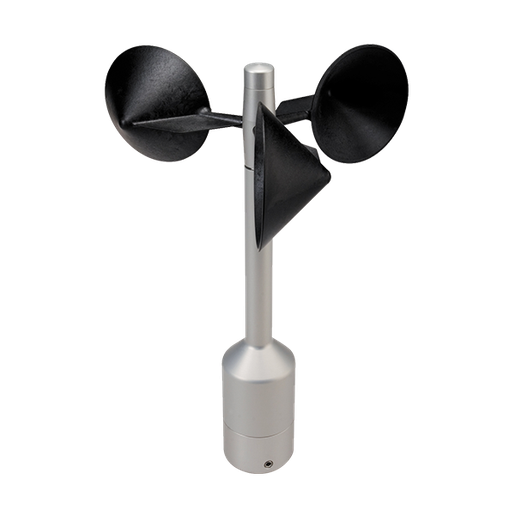Top Features to Try To Find in a Reliable Anemometer for Accurate Wind Dimension
Top Features to Try To Find in a Reliable Anemometer for Accurate Wind Dimension
Blog Article
Exploring the Functions and Advantages of Anemometers for Climate Fanatics and Specialists
From cup anemometers to sonic anemometers, each kind brings its special set of applications and advantages, losing light on different aspects of climatic conditions. As we dive into the features and benefits of anemometers, a much deeper understanding arises not just of prevailing weather sensations but additionally of the broader effects for fields like wind energy manufacturing and environmental study.
Significance of Anemometers in Climate Tracking
Anemometers play a vital duty in climate monitoring by offering precise measurements of wind speed, helping in projecting and understanding weather condition patterns. These tools, varying from typical mug anemometers to modern-day ultrasonic anemometers, are essential for meteorologists, researchers, and weather enthusiasts alike.

Sorts Of Anemometers and Their Applications
With the critical duty anemometers play in weather tracking and forecasting, understanding the numerous sorts of these tools and their applications comes to be necessary for experts and enthusiasts in the area. One of the most typical kinds of anemometers consist of cup anemometers, vane anemometers, hot-wire anemometers, and ultrasonic anemometers. Cup anemometers are composed of three or four mugs mounted on straight arms that turn with the wind, measuring its rate. Vane anemometers, on the various other hand, use an openly turning vane to align with the wind instructions, offering both wind rate and instructions measurements. Hot-wire anemometers run based on the concept of convective heat transfer, where the cooling result of the air flow is measured to figure out wind speed. Ultrasonic anemometers make use of ultrasonic acoustic wave to compute wind speed and instructions precisely.
Cup anemometers are ideal and durable for general weather tracking, while vane anemometers are preferred for directional dimensions. Ultrasonic anemometers are non-intrusive and supply high accuracy, often used in research study and specialized weather condition tracking applications.
Benefits of Making Use Of Anemometers in Projecting
In weather forecasting, the use of anemometers provides very useful advantages for improving the precision of climate projecting. Anemometers measure wind speed and instructions, giving critical information for anticipating weather patterns. By incorporating wind information right into forecasting models, meteorologists can much better comprehend the movement of weather systems, prepare for modifications in atmospheric problems, and problem much more precise projections.
Additionally, anemometers play a crucial role in analyzing prospective weather hazards. Checking wind rates helps forecasters forecast serious climate events such as hurricanes, hurricanes, and winter season tornados with higher precision. This early caution system allows authorities to issue prompt alerts and carry out required precaution, reducing the dangers to life and residential property.
Additionally, anemometers aid in optimizing sustainable power production. By assessing wind patterns, meteorologists can identify appropriate areas for wind farms and anticipate power output, adding to the reliable generation of wind power.

Anemometers in Wind Power Manufacturing
Offered the crucial duty anemometers play in providing accurate wind data for weather condition projecting and hazard assessment, their importance prolongs to the world of wind power manufacturing. Anemometers are essential instruments in the field of wind energy, where the measurement of wind speed and instructions is critical for identifying the expediency and effectiveness of wind generator setups. By precisely determining wind rates at varying heights, anemometers assist enhance the placement and style of wind turbines to make the most of energy output.
In wind farms, anemometers are strategically placed to collect real-time wind data that is made use of to assess the potential power manufacturing of a website. This information is critical in establishing the financial feasibility of wind power projects and in forecasting energy generation to make sure grid stability. In addition, anemometers help in keeping track of wind conditions to optimize turbine performance, protect against damages from high winds, and guarantee the safety and security of employees operating in the area of wind turbines.
Enhancing Climate Recognizing With Anemometers

Anemometers play a crucial function in improving our understanding of microclimates. These localized climate condition can differ substantially from wider regional forecasts, making it vital to have accurate data for specific locations. anemometer. By purposefully putting anemometers in different locations, scientists can collect in-depth info on how wind acts in various terrains, urban environments, or bodies of water
In addition, anemometers add to enhancing weather projecting designs check my source by offering real-time information on wind actions. This info is particularly beneficial for anticipating severe climate occasions, optimizing farming methods, and supporting sectors like air travel and maritime navigation. Generally, anemometers are indispensable instruments that allow us to delve much deeper into the intricacies of weather condition systems, ultimately causing more better-informed decisions and exact predictions.
Verdict
In verdict, anemometers play an essential function in climate surveillance and forecasting by determining wind rate and instructions. Anemometers additionally have applications in wind power production, further highlighting their relevance in both original site weather forecasting and eco-friendly power sectors.
From cup anemometers to sonic anemometers, each type brings its special collection of benefits and applications, losing light on various aspects of atmospheric conditions. These instruments, ranging from conventional cup anemometers to contemporary ultrasonic anemometers, are crucial for meteorologists, scientists, and weather enthusiasts alike. The most common kinds of anemometers consist of mug anemometers, vane anemometers, hot-wire anemometers, and ultrasonic anemometers. Mug anemometers are durable and ideal for basic climate surveillance, while vane anemometers are preferred for directional dimensions. Anemometers are necessary tools in the field of wind energy, where the measurement of wind speed and direction is crucial for identifying the expediency and efficiency of wind turbine installations.
Report this page